How To Build the Best Great Northern Pike and Muskie Leader
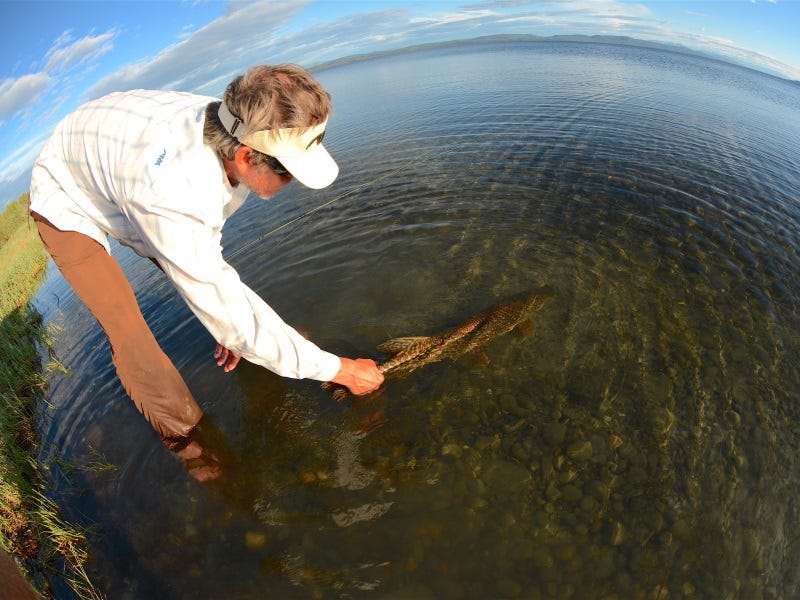

Esox lucius, pike, northern, jackfish, gator, or water wolf. Whatever you call these streamlined fish, they are a ruthless predator. Though they attack a fly, lure or bait, I prefer to feed them a fly. Big pike on fly tackle are a blast. Takes in shallow water can be explosive and fish from 25 inches to 40-plus inches are regularly landed. When compared to the average size of trout, these pike are giants and ultra-fun to fight on a fly rod.
We know pike and get a lot of questions about how to set up for pike fishing on the fly. Chasing pike is a bit different than chasing trout. You can catch smaller pike on a standard trout setup, but for serious pike fishing, you’ll need an 8 or 9-weight rod to throw the big, meaty flies pike love to crush. Pike flies are often constructed with long, magnum-size rabbit strips, like the Alter's Pike Slider fly we approve of. While these strips provide great action in the water, casting them is like throwing a wet tube sock.
Leader matters
Regardless of what weight rod you choose, or how large for fly might be, you'll need a special leader setup because pike teeth will shred a trout leader. Unless you want pike to swim off with your fly as their trophy, you need either a wire bite tippet or a heavy fluorocarbon bite tippet. A relatively short and heavy leader is also preferred to turn over bulky flies. Scientific Anglers offers a lineup of pre-tied Toothy Fish leaders. We like the 7.5’ tapered 20# leader, finished with single-strand titanium or 80# fluorocarbon and a Size 2 Stay-Lok snap. These are an easy choice to get set up quickly. The snap also allows you to make no-fuss fly changes.
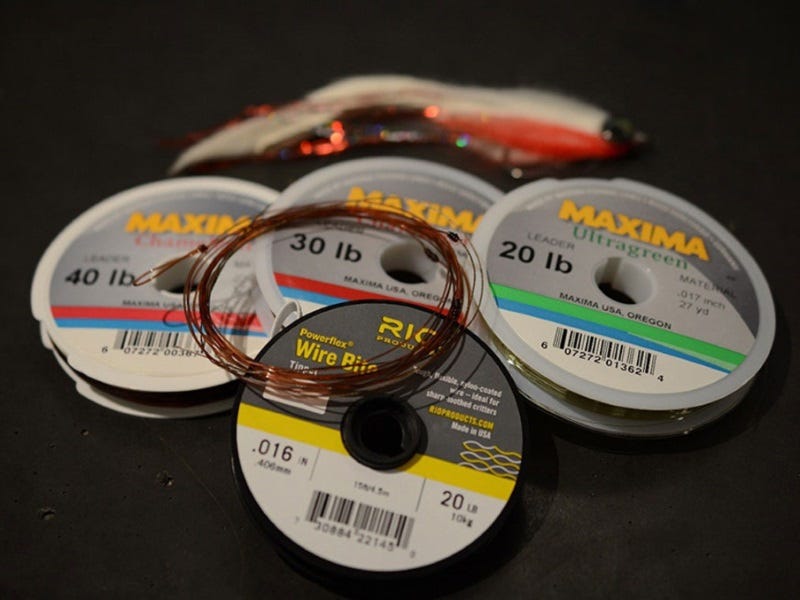
Building your own pike/musky leaders
At some point you may want to build your own pike leaders as these fish are tough on gear and pre-tied commercial pike leaders aren’t cheap. Tying great pike leaders isn’t difficult and you should see immediate success if you follow these simple instructions.
Start with three feet of 40-pound Maxima Chameleon leader and blood knot it to two feet of 30-pound Chameleon. Finish by blood knotting an additional 18 inches of 20-pound Maxima Ultra Green to the 30-pound Chameleon. This will set you up with a short and powerful tapered leader, stiff enough to turn over those “tube sock’ flies.
The next ingredient is the "bite tippet." Our favorite bite tippet material, which we use to finish off our pike leaders, is Rio’s Powerflex Wire Bite Tippet. This is nothing like the Rio Flouroflex Plus or Powerflex mono tippet in the 3-5X range that we prefer for trout. Rio says that Wire Bite is, "tough, flexible, nylon-coated wire ideal for sharp-toothed critters like pike." It is very easy to work with, but many anglers are unsure of the best ways to use it. Here is how I attach Wire Bite Tippet to my leader, and then tippet to my fly.
Peel off a foot or so from the spool and put a double overhand knot in the material. Leave yourself an inch of tag to work with. Draw the double-overhand into a figure eight. Run the tip of your 20-pound mono through both loop openings in the figure eight. Draw the figure eight tight without pinching the mono. Give yourself about eight inches of mono to work with for the next step
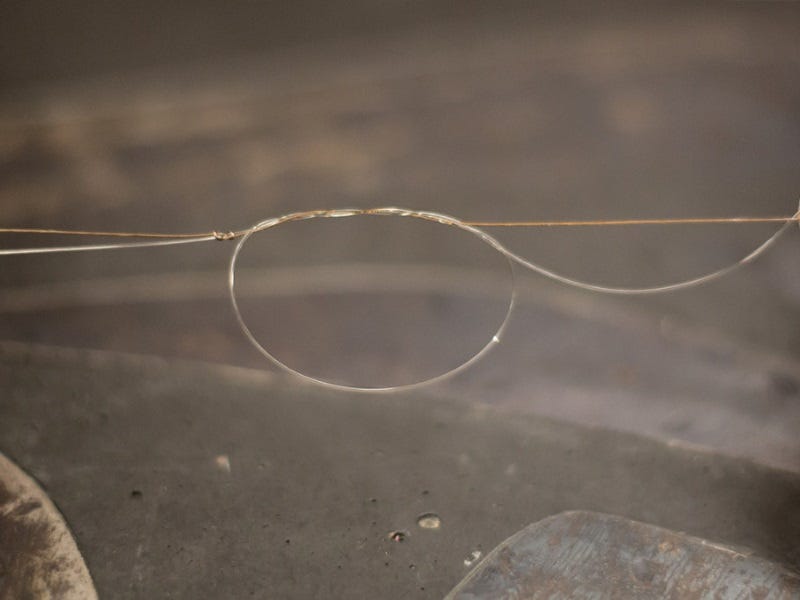
There are several ways to achieve the barrel knot. I prefer to simply form a loop and wrap the tag four times over the wire uni-knot style. Then I twist the tag end so the coils align. Be careful not to pinch into the coating on the wire. Make sure to lube (spit) on your knot as you work the coils into a barrel. Some anglers prefer to use a nail-knot tool. Again, make sure your materials are lubricated as you draw them together.
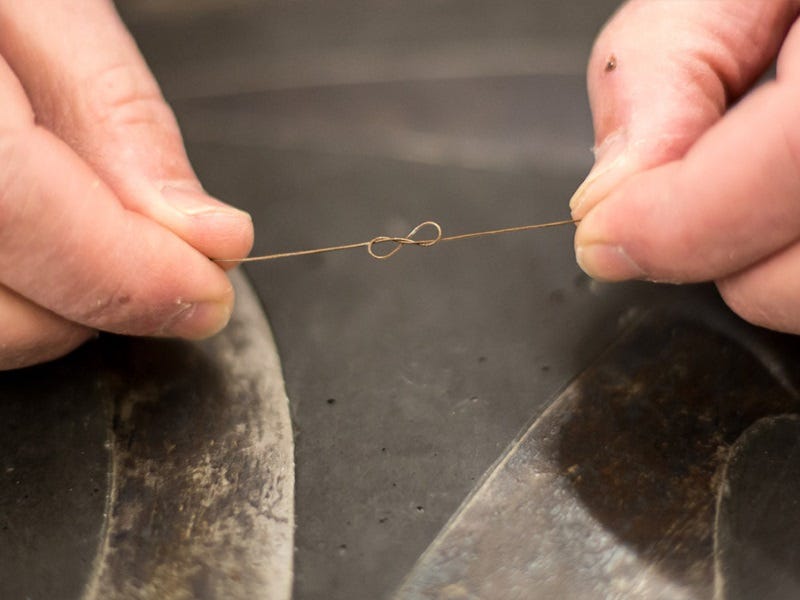
Here is the finished assembly (see below). Notice the connection is clean and the wire and mono are both straight with no kink or set. For added security, you can add a drop of Zap-A-Gap or UV Knot Sense.
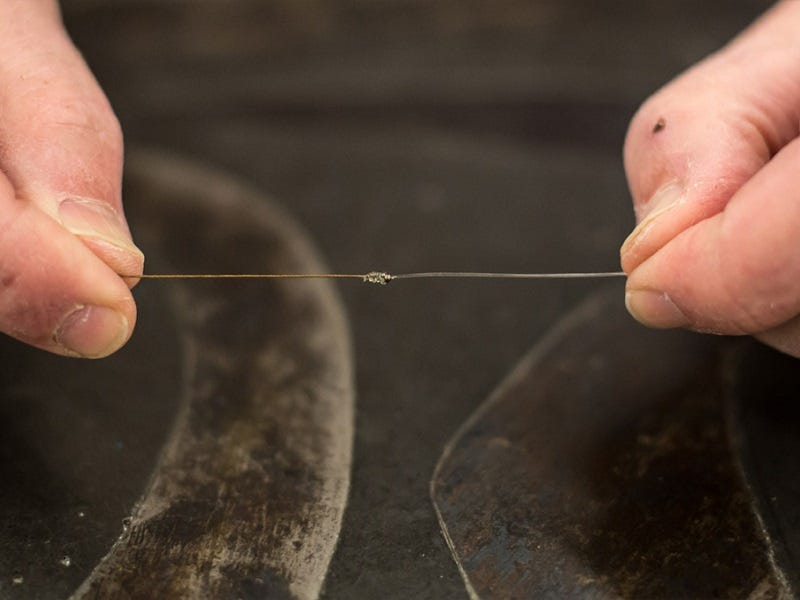
How to add the fly
To add a fly, a non-slip loop-knot works great. This is likely how you tie your streamers to tippet already. Start with an overhand in the tippet and run the tag through the eye of the hook. Take the tag back through the loop you formed in the tippet. You will need about 2.5 inches of tag to work with.
Wrap your tag around the standing line three times and come back through the loop. You are basically tying a three-turn clinch-knot through the loop you created in the tippet. Draw the knot together carefully, allowing approximately 3/8 inches of loop space. The wire bite is flexible, but adding a loop knot allows your fly the best free-swimming motion. And that may prove the difference between a solid take and just a look.
If you make numerous fly changes while fishing for pike—meaning you throw everything you got until you find the answer—forgo the loop knot and tie on a Cross-Lok snap. It is hard to argue with the convenience of a snap. The Uni-Knot is perfect for this connection.
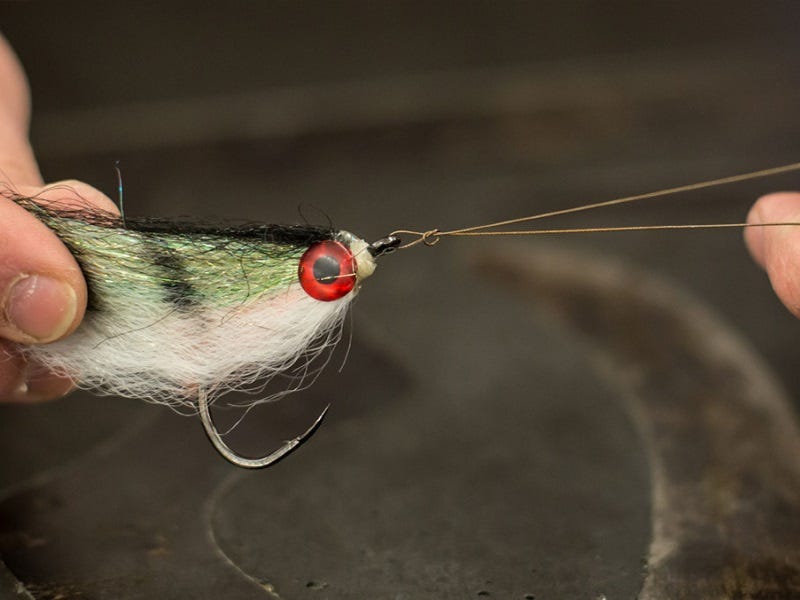
Setting up for a fight
Here at North 40 Fly Shop we’ve got everything you need to get set up for old Esox lucius. Spring offers the best pike fishing of the year (and for tiger musky, too) so there’s good reason to get ready for the season right now. If you need a dedicated pike outfit, we’ve got 8 and 9-weight rods ready to roll. We’ve got some great reel pairings for your rod, along with the Rio Pike/Musky Fly Line, which has a heavy head and turns over large flies, i.e., those tube socks. Now that you’ve constructed the perfect pike leader and attached a large fly to a proper fly rod, deploy your system in pike infested waters and get ready to brawl.
Where to find pike in Montana—A short list
Fort Peck Reservoir
Smith Lake
Pushkin Reservoir
Lake Frances
Clark Fork River
Bitteroot River
Flathead River
